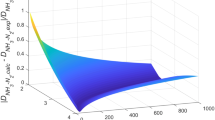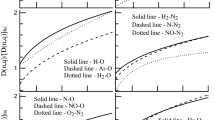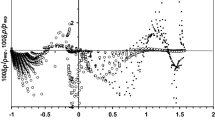Abstract
Thermal conductivities coefficients for gaseous state of N2, O2 and CO2 at zero density are determined by the inversion technique. The Lennard-Jones 12-6 (LJ 12-6) potential energy function is used as the initial model potential required by the technique. The Wang Chang-Uhlenbeck-de Boer (WCUB) approach of the kinetic theory of gases has been used for calculating the contribution of molecular degree of freedom to the thermal conductivity of N2, O2 and CO2. Also, the initial density dependence of gaseous thermal conductivity according to the Rainwater-Friend theory, which was given by Najafi et al., has been considered for N2, O2 and CO2.
Similar content being viewed by others
Author information
Authors and Affiliations
Corresponding author
Rights and permissions
About this article
Cite this article
Haghighi, B., Shahidi, D., Papari, M. et al. Prediction of thermal conductivities of oxygen, nitrogen and carbon dioxide at the moderate density regime via semi-empirical assessment. Korean J. Chem. Eng. 24, 1–10 (2007). https://doi.org/10.1007/s11814-007-5001-8
Issue Date:
DOI: https://doi.org/10.1007/s11814-007-5001-8




